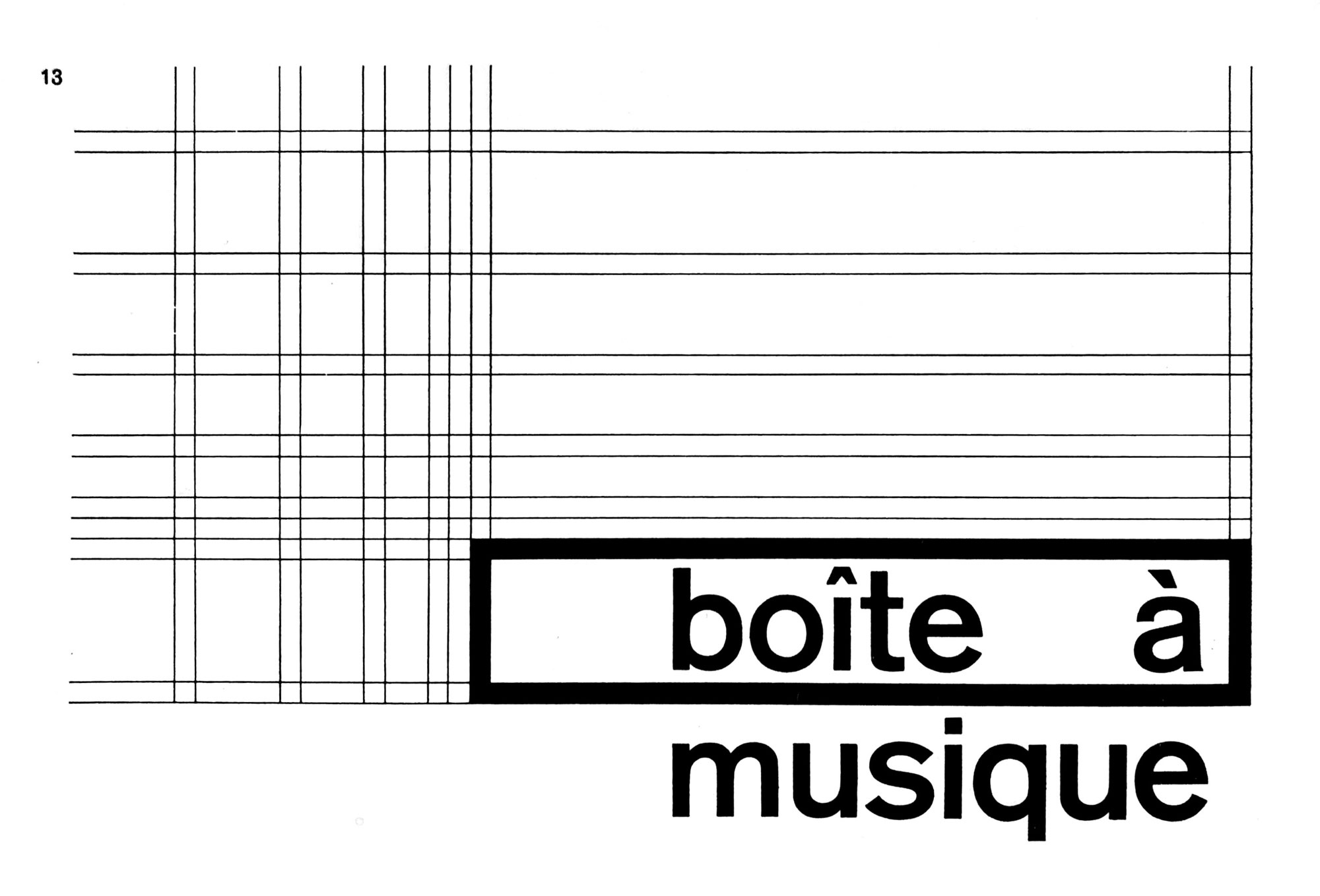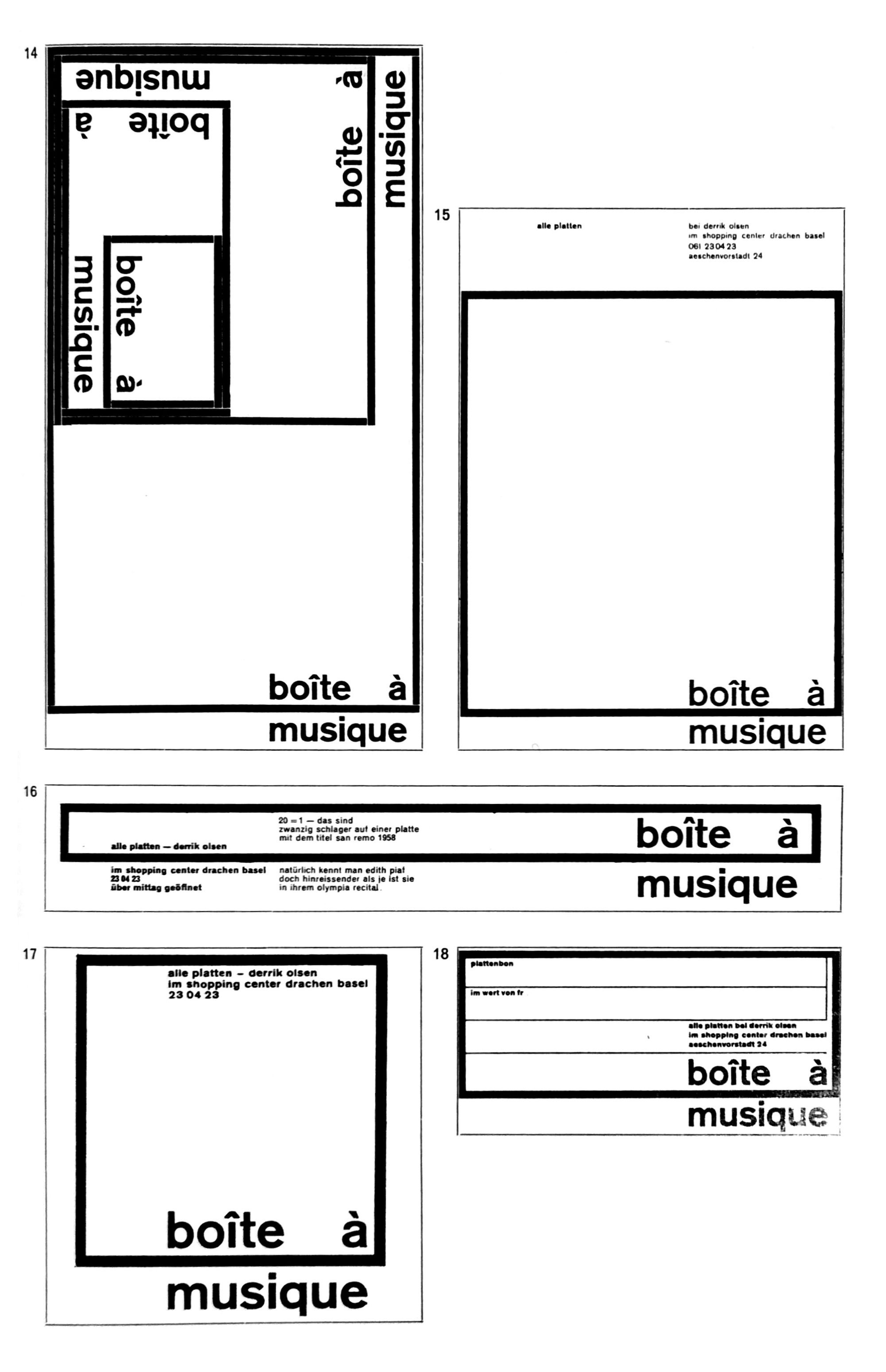Solution system
The 1964 book Designing Programmes by Karl Gerstner has recently become much more accessible with a release of a fascimile edition by Lars Muller publishers for about $40 or so. (Prior to this, the book was infamously hard to come by with a $2,000 price tag for a new version and around $250 for a used one.)
The main idea of the book is rather than designing a single solution to solve a problem, design a system that can generate any number of solutions to that problem. One example from the book is the identity for a record shop in Basel, Switzerland, called “Boîte à musique”; instead of a single design for a letterhead, typical ad, gift card, etc. — Gerstner designs a grid with a set of rules to govern its use and then the application is decided “in the moment” based on the medium and its intended use.
The grid:

Various outworkings:

As I read the book I began to think about what a system to generate solutions for a website design could look like; not just similar visual elements, but a series of rules to set down an order that would allow for “the maximum of conformity to a rule with the maximum of freedom.” (p. 12, Designing Programmes)
Then, inspired by Jonnie Hallman’s and Frank Chimero’s open redesign process, I thought it would be fun to work it out in the open. So, here we are!